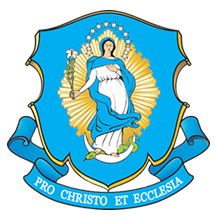
"In other ages God had not been represented in images, being incorporate and faceless. But since God has now been seen in the flesh, and lived among men, I represent that part of God which is visible."
By Kimberly Bruce
Saint John Damascene (c. 676-c. 749 A.D.), whose feast day we celebrate on Dec. 4, is an early Doctor of the Church, famous for defending the veneration of sacred images against the iconoclasts in the eighth and ninth centuries. He was described by Pope Benedict XVI on May 6, 2009 as “a personage of prime importance in the history of Byzantine Theology” and “a great Doctor in the history of the Universal Church.”
He was declared a Doctor of the Church for his writings in defense of the Virgin Mary as “Mother of God”; his summa theologica, entitled The Source of Knowledge; his Fountain of Wisdom; The Orthodox Faith; and many other discourses and sacred hymns.
Early life
Born in Damascus, Syria (hence his name "Damascene," "of Damascus"), to a government official father who worked under the Byzantine and Muslim rulers of Damascus, St. John and his half-brother, Cosmas, were tutored by a Christian Sicilian monk (also named Cosmas).
John excelled in algebra, geometry, music, astronomy, theology, and was fluent in Arabic and Greek. When his father died, John was appointed chief councilor of Damascus.
Around the year 700, feeling called to religious life, St. John entered a monastery near Jerusalem, eventually becoming a priest.
Attack on icons
In 726, the first edict against the veneration of images was issued by Byzantine emperor, Leo the Isaurian, despite protests from the Patriarch of Constantinople. That was all St. John needed to embolden him to write to the emperor explaining and defending the use of sacred images throughout Church history. He also motivated Christian resistance to the edict.
In 730, a second edict went forth forbidding exhibition of such images in public places. Many devout Christians were put to death for their refusal to desecrate their holy images. Emboldened further, St. John continued to encourage Christians against these edicts. He also wrote another letter warning the emperor of the consequences of his actions. Not surprisingly, the emperor became furious and was determined to destroy St. John.
Emperor Leo had a letter forged that appeared to have been written by St. John. In the forgery was St. John’s offer to betray Damascus into the hands of Emperor Leo. Believing the authenticity of this letter, the Muslim caliph ordered the hand of St. John to be cut off. However, the hand of the saint was miraculously restored due to prayers asked through the intercession of the Blessed Virgin Mary. The caliph then believed St. John to be innocent.
The "Golden Stream"
During a pseudo-synod in 754 (the Council of Hieria), the position of the Iconoclasts was seemingly solidified. St. John was decreed a “traitorous worshipper of images,” a “wronger of Jesus Christ,” and “a teacher of impiety,” to name a few.
At the Second Ecumenical Council of Nicaea in 787, however, the numerous insults St. John had suffered were atoned for. Saint Theophanes, present at the Council, and who was later imprisoned for his defense of sacred images, wrote that St. John was called “Chrysorrhoas” (golden stream) by his friends because of his oratorical gifts.
"In other ages God had not been represented in images, being incorporate and faceless," St. John wrote. "But since God has now been seen in the flesh, and lived among men, I represent that part of God which is visible. I do not venerate matter, but the Creator of matter, who became matter for my sake and deigned to live in matter and bring about my salvation through matter. I will not cease therefore to venerate that matter through which my salvation was achieved."
Pope Benedict XVI credited St. John Damascene as "among the first to distinguish … both in public and private … between worship (latreia), and veneration (proskynesis): the first can only be offered to God, spiritual above all else, the second, on the other hand, can make use of an image to address the one whom the image represents. Obviously the Saint can in no way be identified with the material of which the icon is composed."
Saint John Damascene died on Dec. 4, sometime around 749 A.D. He was declared a Doctor of the Church in 1890 by Pope Leo XIII, who named him the “Doctor of the Assumption” for his writings supporting Mary’s Assumption into Heaven at the end of her earthly life.
Saint John Damascene, Doctor of the Church, pray for us!
{shopmercy-ad}
















